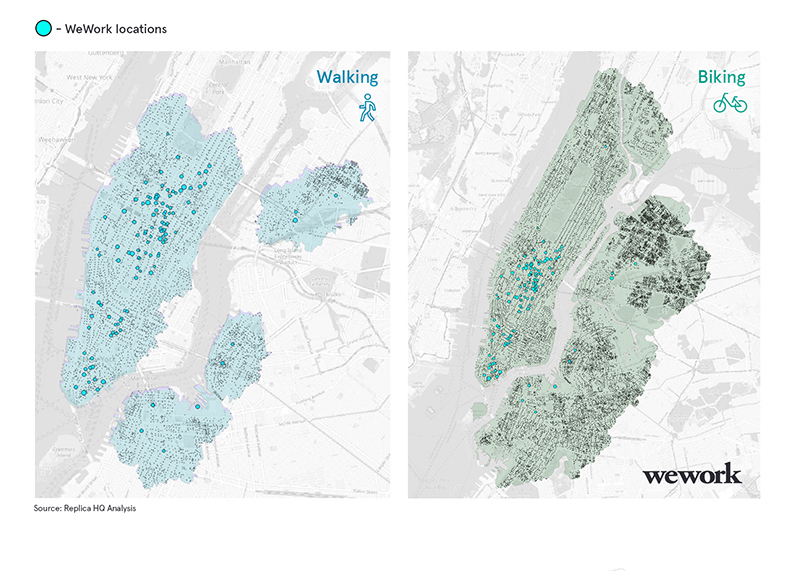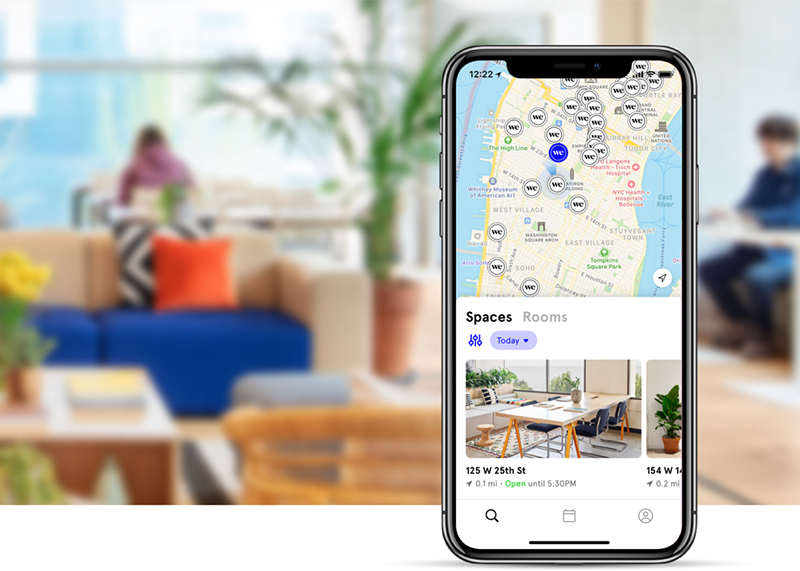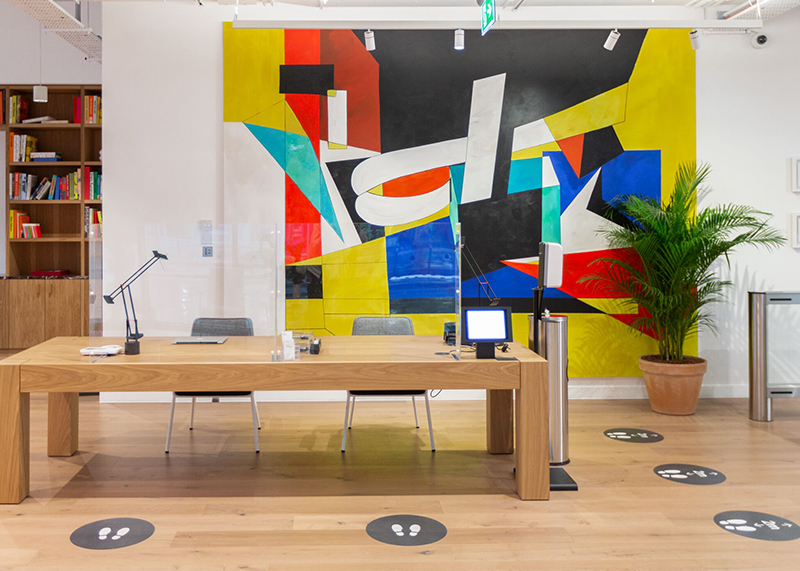As we enter the tenth month of the global pandemic, and the beginning of a new year, I’ve had time to reflect on the enormous challenges we’ve recently faced in the world of work.
The previous many months have supplied unprecedented hardships across the globe. We’ve been faced with the loss of loved ones, struggling economies and dramatic changes to the way we live. Yet, through all of it, there have been glimpses of triumph from our collective human spirit. Across industries, we have been adapting, pushing ourselves to evolve and finding new solutions for the great challenges we face – most inspiring among them, of course, a COVID-19 vaccine developed in rapid time.
Yet, we’re not quite out of the woods. As many around the globe wait to receive the vaccine, we’ve seen new lockdowns and work-from-home orders. People often ask me what I think the future holds for WeWork in this environment. The honest truth is, I’ve never been more invigorated or excited. The pandemic has taught us an important lesson about the world of work. What was ‘normal’ before was not working – it was not actually optimal for employers or employees. WeWork has the opportunity right now to reimagine the future of work.
Where we came from
Up until recently, sprawling campuses and centralised headquarters were seen as a symbol of success. With property as the largest cost centre for businesses outside of employee compensation, a significant physical footprint could understandably be viewed as the result of a triumphant business model. But when COVID-19 struck, the old status quo did not stand up to the challenge. Those densely populated corporate buildings were simply not equipped to support a safe work environment. And so, we went home. Then the headlines began: ‘The office is dead’.
The work-from-home model was nice, until it wasn’t. Working from home provided a change of pace, even creating an opportunity for more efficient individual productivity for some. But over many months there has been a clear qualitative and quantitative shift in experience. Not only is owning a productive, dedicated workspace at home a privilege available to few, but even those with access to that sacred space have discovered its imperfections.

Writing from my own experience, I have six (wonderful!) kids, four now at home. Between virtual schooling and working from home, we’ve been in endless video meetings, lessons and activities. We’re competing for WiFi as well as quiet, concentrated time. While we’re constantly ‘connected’, I can’t help but feel that none of us are really connecting. There’s an endless list of scheduled virtual moments to get through that leaves no time for reflection or actual work. I’ve been craving a place to think, and space to innovate – figurative and literal space.
And now I know it’s not just me.
The novelty of the work-from-home model has worn off, and industry leaders and companies of all sizes are facing real challenges. We’ve done the research at WeWork – employees are feeling the pain too. Our global blind study of professional office workers across industries showed that all work styles and levels have suffered negative impacts on collaboration and innovation since the work-from-home model took hold. Ninety per cent of those surveyed want to return to the office at least one day per week. Why? The data showed, across the board, that working from home has hampered the ability to brainstorm, to maintain social relationships and have unplanned interactions – the very things that inspire creativity and innovation.
We learned that the quantity of meetings over video chat is no substitute for the quality (or productivity) that comes from spending physical time together. In fact, according to another study, 36 per cent feel less positive about their careers and 45 per cent feel less productive. We’re working more than ever – but has it actually been effective?

The WFH model may be effective for some people with specific workstyles or roles. Twitter and Shopify have given employees the option to work remotely forever. The key word there is option. Even tech giants employing engineers with significant solo work are hearing that their staff wants change. In a recent survey conducted at Google, 62 per cent of employees said they wanted to be in an office some days, while only 10 per cent want to work from home permanently after the pandemic subsides. And tech’s leadership is no longer shy about acknowledging the challenges. Sundar Pichai, Satya Nadella and Reed Hastings have all come forward with concerns about the work-from-home model.
The mental and physical well-being of our teams is at risk. An Oracle and Workplace Intelligence study that surveyed over 12,000 workers globally found that 78 per cent said the pandemic has negatively impacted their mental health. In that same study, 85 per cent said that poor mental health associated with work spills over onto their life at home. In September, a shocking statistic from a Lucidspark study demonstrated that 1 in 5 remote workers polled were actually breaking the safety policies of their companies to meet in person because they felt their virtual meetings were ineffective. This is not OK. It’s up to us as business leaders to provide better solutions.
Where we’re going
As the world’s largest flexible space provider, with 800 locations in 150 cities across the world, we knew this was the time to listen. We listened to employees, our own and across other industries. We listened to the leaders of large, multinational businesses, hungry startup founders and everyone in between. Across the board, four priorities became clear:
- Teams need physical space together for productive collaborative and creative work.
- Business leaders want flexible property terms and are wary of being locked into long-term leases in a volatile economy.
- Heads of property and finance want reliable usage data to make purchase decisions, not only on who is using spaces when, but with the ability to forecast for spaces in closer geographic proximity to employees’ homes, with parking availability and a reduced carbon footprint as a result.
- Health and safety continues to be a top priority for all parties – not just physical safety but also mental well-being.
For leaders, meeting these needs has become challenging with the traditional commercial property model. In an economy as tumultuous as today’s, property is a critical line item to interrogate. While a human resources team may be imploring the CEO to keep space for collaboration, a CFO is arguing against signing long-term leases that lock the company into buildings that may not be widely used. The Head of Property wants to make cost-efficient decisions based on real usage data that goes beyond key card tracking and considers how to effectively minimise employee commute times and increase accessibility.
What we’ve begun to see are trends towards flexibility, for employees and employers, because it is clear there is no one-size-fits-all answer. A recent CBRE study demonstrated that 86 per cent of respondents saw flexible workspace as a key component of their future property strategy. Four new approaches are emerging, and they will shape the future of work:
- Work from near home: providing your employees with professional working spaces that are within walking or cycling distance from their homes. This prioritises their safety while supplying an environment optimised for individual tasks if the employee does not have one at home.
- Decentralised offices: a hub-and-spoke model that provides employees with satellite offices closer to their homes, helping them to avoid long commutes while providing space to safely collaborate in small groups. This can give staff the feeling of community even at a distance from a central HQ.
- Collaboration hubs: a model that shifts the purpose of a central office to primarily host intentional collaborative activities while maintaining work-from-home policies for individual tasks.
- De-densified workspaces: a model that reconfigures a company’s original office space for social distancing in the same physical footprint. This may mean, for example, a space that once accommodated 1,000 people will be redesigned to support 300.
The property industry was not designed for flexibility. The lease terms of yesterday do not support these emerging space strategies. According to the Financial Times editorial board, ‘’Hybrid’ will be the word of the year in 2021.’
At WeWork we’ve been reimagining the purpose of the office and the way offices are leased. We are the only provider with the scale to support these new approaches effectively. (In New York City alone, about 33 per cent of office workers live within a 15-minute walk to a WeWork location, and 58 per cent live within a 15-minute bike ride.)

This is a critical moment of change in the property industry, and we know that we have solutions to support the strategies of tomorrow.
Who we are
At WeWork, we believe flexibility is workspace as a service. We are the only property provider to offer whatever size workspace you require, for however long you need it – be it an hour or years, wherever in the world you need it. We do this all with no up-front investment and none of the added costs that usually come with office management and maintenance. Because of this, our global spaces can be used to nimbly accommodate all of the emerging workspace strategies and give company leadership peace of mind, knowing they can evolve and adjust their strategy whenever they need to.
All of the data and space trends have led us to three simple products:
- Dedicated Spaces: our options for private office space that range in size from one to two people to full floors or entire buildings for thousands of employees. Any of which can be configured to be used for collaborative workspace only, de-densified for social distancing or decentralised to several buildings across a city, country or even continent. Because of our global scale, you can trust that distributed teams will always experience consistent quality of space no matter where they are. And you still get unlimited access to common rooms and lounges as additional areas for socially distanced work or team activities.
- All Access: our monthly subscription option, WeWork All Access, gives individuals access to desks and common spaces at hundreds of locations in 150 cities. This is an ideal solution for leaders looking to give distributed individuals work-from-near-home options on a short- or long-term basis while providing safe spaces for groups to gather together whenever they want.
- On Demand: our pay-as-you-go option, WeWork On Demand, allows you to book desks and conference rooms whenever, wherever, with no long-term commitment. This is ideal for teams looking for ad hoc collaborative spaces and work from near home solutions.

The beauty of these products is that they can be bundled together, mixed and matched, or scaled up and down at will. Our members can easily create their own hybrid model, deciding for themselves what is best for their business.

We’ve prioritised the health and safety of our employees and members and partnered with leading health and security companies to redefine our standards. As a result, we’ve invested significant capital into a new cutting-edge HVAC system for optimal air quality, increased cleaning measures, installed 19,000 hand sanitising dispensers, cognitively designed behavioural signage to reinforce social distancing and are now offering discounted Physician 360 COVID-19 Test home collection kits. We’re proud to be the world leader in health and safety in property.
Plan for tomorrow, today
The reality is, now is the time to act. Even with the promise of the vaccine, we can’t be certain when the threat of COVID-19 will end, but we do know that planning for the future of work is critical to rebuilding our global economy and to the health of our teams. That planning must begin now.
Forty per cent of the Fortune 100 are WeWork members, and many are working with us right now to reshape their workspaces for the property strategies of the future. They are thinking more intentionally about how to use space, where they want it and when. They’re giving their employees comfort by prioritising their safety and listening and responding to their unique needs. They’re using our technology to forecast geographically optimised locations for minimised commutes. They’re reimagining the role of the office and planning hybrid solutions of shared, decentralised, dedicated spaces to offer their teams maximum flexibility, reduce their fixed costs and provide a seamless experience across the globe.

So when people ask me, ‘How do you feel about the future of work?’ and I respond with excitement, it is because I’m genuinely inspired by the opportunity that lies before us. Those who believe we’ll return to the way things were before COVID-19 struck will be closing their doors. As an analyst for The New York Times recently wrote, ‘Coronavirus will not kill the office. If anything, it figures to be more dynamic than ever. The ability to work remotely will not drive most people away from cities and offices, but it will enable many to live and work in new ways and places.’
If we embrace this moment as a time to reinvent the workspace to be safer, more productive and more collaborative, the possibilities for what we can achieve will reach far beyond the walls of any office.
Marcelo Claure is executive chairman at WeWork and chief executive officer at SoftBank Group International.










